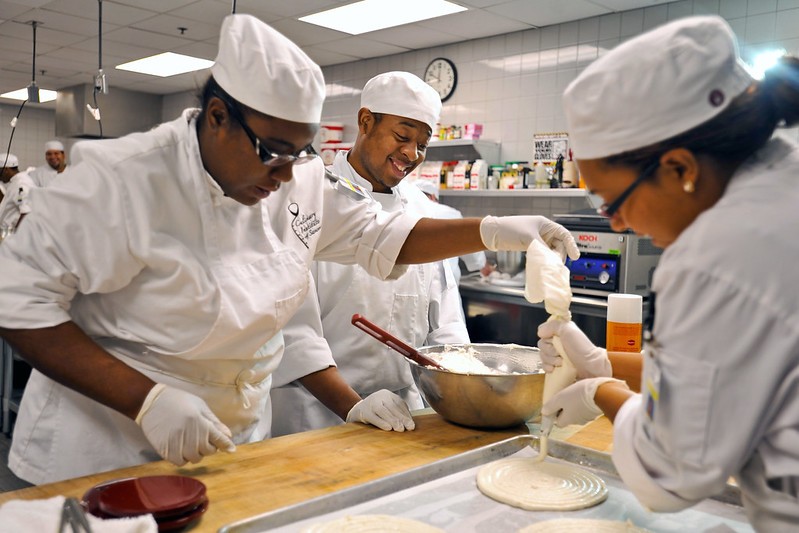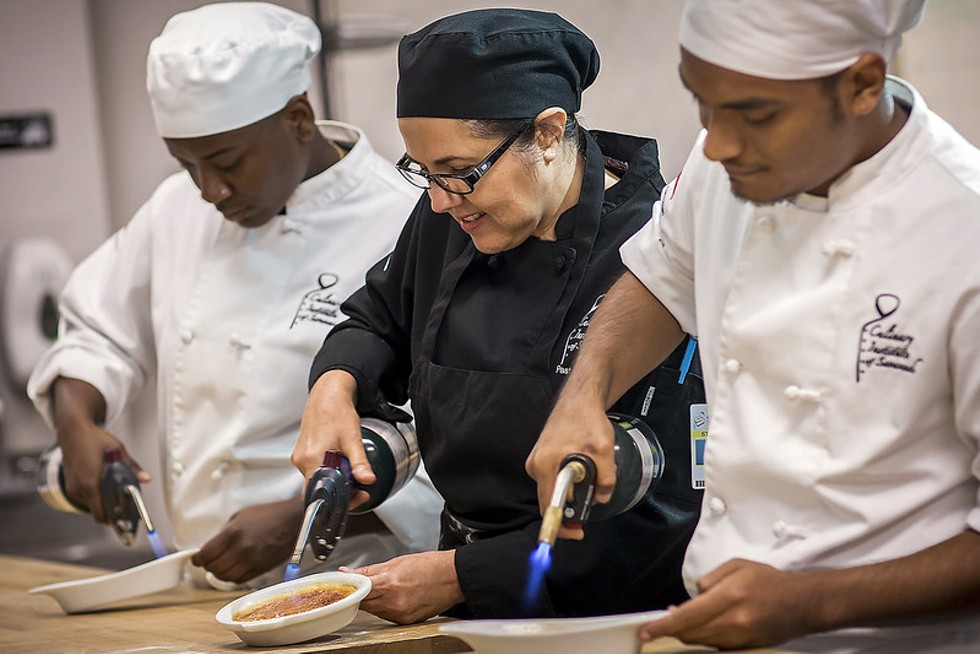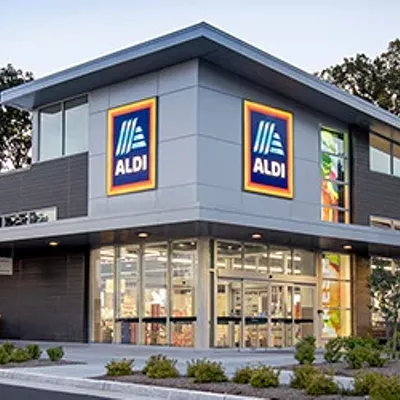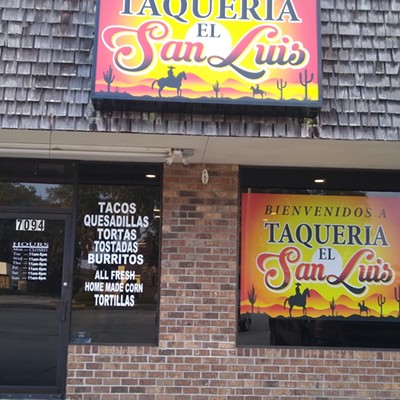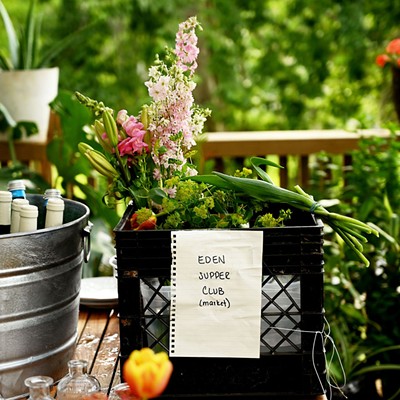For the last few years, millions of traipsing tourists and dallying drivers who have traveled along the thoroughfare that is Bay Street have seen the ‘Coming Soon’ signs: filling up the windows of 7 West Bay, images of aproned and toqued chefs, all smiling, perhaps because they knew what was going on behind those doors.
In less than a month, Savannah Culinary Institute will be given the Certificate of Occupancy, which means dinner will soon be served - after classes are held to teach students how to make said dinner, of course.
Robert Grant, Savannah Technical College’s (STC) Vice President for Community and College Relations, expects that a media day will be held in December with a grand opening come the calendar’s turn to 2025.
“On day one of my job,” Grant recalled, “I walked into my office, and hanging on the wall in a frame was the front page of the Savannah Morning News from 2018, and it said, ‘Savannah Technical College to build culinary institute downtown’.”
He paused for effect and smiled.
While six years may sound like a long lead time, when the ribbon is cut on the 14,000-square-foot facility, guests will see why patience is, indeed, a virtue.
PRESERVING AND CREATING HISTORY
Reconstruction of the antebellum building began in May of 2023, and less than a year and a half into the massive restoration, the interior is incredible. Certainly, the students and their culinary creations will be the stars at the yet-to-be-named eatery, but the space itself is spectacular, a wonderwork of design ingenuity and stewardship of Savannah’s past.
The stately structure was once home to The Savannah Republican, and just behind it, where BankSouth now resides, were stables that made for easy delivery of the relatively short-lived newspaper.
“In fact, this contraption here,” Grant said, pointing to an enormous steel wheel, “was an elevator hoist. They would bring the paper in and hoist it up to the top floor, and they would run the newspaper down and back out again.”
The Pinyan Company has cleverly carried out the marching orders of Hansen Architects and Tharpe Engineering Group to maintain so much of the historic nature while reenforcing the edifice for its next historic purpose. National Office Systems has outfitted the interior design to blend form and function, the past and the future.
Longtime Savannahians who might remember the erstwhile home of Club Rain and Hip Huggers will surely be the most amazed at the total transformation.
“It was a complete remodel,” said Grant. “We were standing in dirt and looking all the way up to the fourth floor and seeing rafters.”
Shawn Skinner, project manager for The Pinyan Company, said that the building’s bottom level now sits nearly five feet lower than it did two years ago: the entire foundation was dug out by hand so that the underpinnings could be shored up, a process Pinyan previously performed at Sorry Charlie’s (The Gibbons Range Building) and The Drayton Hotel (The America Trust and Bank Building).
“It was a brick floor before. The brick had to come out first. Then the dirt came out,” added Sam McCachern, President and CEO of Thomas & Hutton and an at-large officer with the STC Foundation.
McCachern and Skinner agreed that roughly half of the project was stabilizing an old building.
“If I can speak as a general contractor,” said the latter, “the first step is to rule out things that are off-limits. It has to stay historic. We wanted to show some structural brickwork throughout the building, to show some of the original joists, the bones of it.”
Skinner estimated that 70 percent of the joist and beam work is brand-new, but the brickwork throughout is original, tuckpointed from floors to ceilings “so that it is part of the structure.”
The exterior features an entirely redone façade, and a large glass paver on the Bay Street sidewalk will offer a view down an original set of stone steps into the main dining room and will act as a street-level skylight.
FOUR FLOORS OF FOOD
The design of the multifunctional building beggars belief, beginning with the street-level footprint that is split into immense culinary and bakery-pastry kitchens plus a counter for grab-and-go retail sales and a handful of dine-in tables next to a pastry finishing showroom.
“The huge part of the process is for the customers to see exactly what we do. We want our students to be visible,” Caudell said. “We don’t have a lot of opportunities to serve people on a regular basis at the main campus, so that’s what this area is all about.”
“There’s a million foot traffic a year on Bay Street, and they’ll be able to see students working,” said Grant: two outward-facing monitors will project what is going on inside.
Downstairs is a 74-seat dining room, somewhat speakeasyish in its basement ambience, most tables with a clear view of the theater kitchen and wood-fired oven and a dozen more seats at a wine bar.
A new state-wide policy going into effect will allow students to serve alcohol as the SCI “incorporates wine, beer, and spirits over time,” said the head chef. “That’s a big jump for us.”
“It’s a regular restaurant,” he continued. “That way, they have the actual experience before they get out in the industry. The students can learn and also work on the soft skills for service.”
McCachern added, “We need front of house as well as food preparation so that we can create a consistent academic experience.”
Rising above the subterranean showspace are now three more fabulous floors that encompass the full-scope of culinary education and customer service, accessible both by staircases and a four-floor elevator shaft, a major feat of engineering that was sponsored by Foram Group.
The reimagined second floor serves the school side, a seminar space with traditional classrooms and adjacent faculty offices. On the top floor, an airy and bright herb library leads into a stem-to-stern demonstration kitchen, funded by the family of David Sovchen, a longtime owner of several Wendy’s franchises.
Think The Great British Baking Show’s tent comes inside: a chef’s demo table faces ten stations, each equipped with two induction burners and electric ovens, while HD cameras project the lesson du jour’s skills and techniques onto TV screens, allowing students to follow along and to replicate in real time.
Talk about a Showstopper.
Both Caudell and Grant expressed hopes that this floor will be “a revenue-generating space,” working with local hoteliers and concierges to bring in bridal parties, corporate events, family reunions, and honeymooners to take cooking classes with Chef Gearry.
Grant imagined other restaurateurs using the demo kitchen for their own respective staff trainings.
AN ORIGINAL RECIPE
Grant shared that the “impetus for this entire project was a trip to the Culinary Institute of America back in 2013,” at which time Savannah Tech’s leadership realized that in order to become competitive on the culinary arts scene, a working restaurant was a requisite.
“We want to be the number one culinary institute in America,” Grant continued, “and the people who started this idea, way back, had the foresight to have it right here in the middle of the Historic District because of the demand coming from the hospitality industry.”
“All the top schools are for-profit schools, so to get that associate’s degree education, you’re probably talking $90,000,” said Gearry Caudell (CEC, CFSE, ACE), Culinary Department Head as of 2019 and on the faculty for fourteen-plus years.
“This is one of the huge benefits about being a state-funded operation,” he added. “We can provide a top-quality education for our students that’s not going to break the bank.”
Economics aside, few programs in the country will be able to compare, especially as several culinary schools across the country have been 86ed over the last two decades: in 2006, Johnson & Wales closed its Norfolk and Charleston campuses, the latter taken over by Trident Technical College, and The Art Institutes shuttered operations in Atlanta a year ago.
Grant notes that SCI is the last baking and pastry bastion in Georgia, headed up by chef Jessica Rice, so students from all over the state are calling, hoping to come to Savannah and to partake of that program.
“I have someone that’s driving from Atlanta,” said Caudell. “She was at The Art Institute. She enrolled that last semester, and then a couple weeks later, they shut down.”
Last fall, a hundred students were enrolled. That number now sits at 150, and Caudell sees that increasing by another hundred once the 7 West Bay culinary mecca opens.
“The community is hugely supportive because everybody wants a really well-qualified person to be able to come into their establishment,” he continued, “so this has drawn a lot of attention outside of our region.”
ON TONIGHT’S MENU…
“It’s not going to be open like an Applebee’s,” Grant said of the reservation-only full-service sit-down downstairs dinners.
He and Caudell expect that menus will be posted on social media or blasted by email so that online bookings can be made.
“The game plan [is] being open Tuesday, Wednesday, and Thursday at the lunch hours and evenings for people to buy whatever’s being made that day,” Grant explained with grab-and-go retail services available on Tuesday, Thursday, and Friday.
Caudell said, “It’s going to be a little bit more complicated for us because we’re incorporating the restaurant’s themes into our different classes. We have international cuisine, contemporary cuisine, garde manger, hot and cold–plated desserts. All these classes can have form and function within this space.”
He explained that students will do all the prep and mise en place on Mondays, and Tuesdays will see them make final touches before running first service and shutting down operations that evening. Wednesdays and Thursdays will see them engaged in different classes.
“That gives our patrons the opportunity to see a lot of different things throughout a week,” said Caudell.
Introductory courses will remain primarily on STC’s White Bluff campus, and intermediate and advanced courses will move to 7 West Bay, where the chef-professor estimates that a staff of 100 will run a night’s service.
“They need time in the kitchen, time to get acclimated, and then they come here,” he said. “We want to make sure they’re tested before they ever start serving people.”
Because the intention is a comprehensive culinary experience, the restaurant cannot and will not be pigeon-holed to a particular cuisine.
“That’s where it gets complicated,” said Caudell with a smile. “Our goal is to run the same menu for two weeks, based on those classes.”
“We’re going to shoot for a prix fixe meal,” he added. “Run a few appetizers, run a few entrées, run a few desserts.”
“It will keep everything interesting for the patrons and for the students, too.”
WELL WORTH THE WAIT AND THE COST
“We thought it was going to be a $2-million project,” Grant explained, “and we got in here and realized it was going to be a $10-million project.”
“So we turned it over to the state,” he said, meaning the Georgia State Financing and Investment Commission, the “premier resource for financial and construction management services,” per its own vision statement.
“It is a great story of private philanthropy making something happen,” added McCachern. “If it had not been for the Foundation, this would’ve gone somewhere else. If it had not been for BankSouth, it would not have happened.”
Grant chimed in, “They literally saved the day for us.”
Local investment overflows in this one-of-one project, a testament to how food fuels Savannah’s economy and culture. In addition to Foram Group and the Sovchens, Dick and Judy Eckburg, Bill Dickinson, Stratton and Mary Leopold, and Daniel Reed Hospitality all made significant contributions to what will be a Disney World for culinary education.
Among a half-dozen other discrete spaces, the restaurant itself has yet to be named.
“For five million dollars, it could be the Neil Gabbey Culinary Institute of Savannah,” Grant joked, “and we only need half up front.”
Just save me a table.
Savannah Technical College’s Savannah Culinary Institute Downtown Expansion (7 West Bay Street) will soon be open in January. Stay tuned for hours and offerings via social media and listservs.

